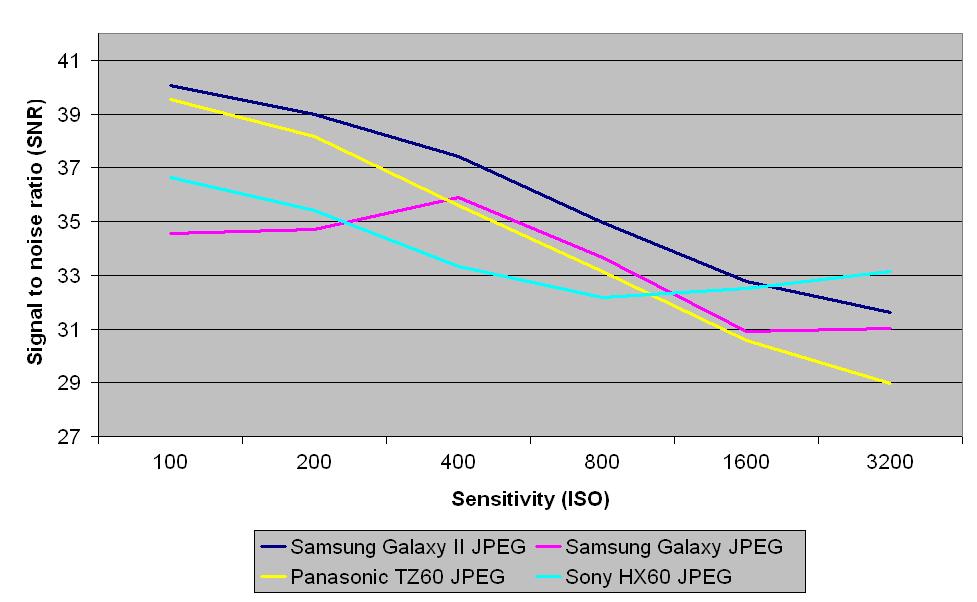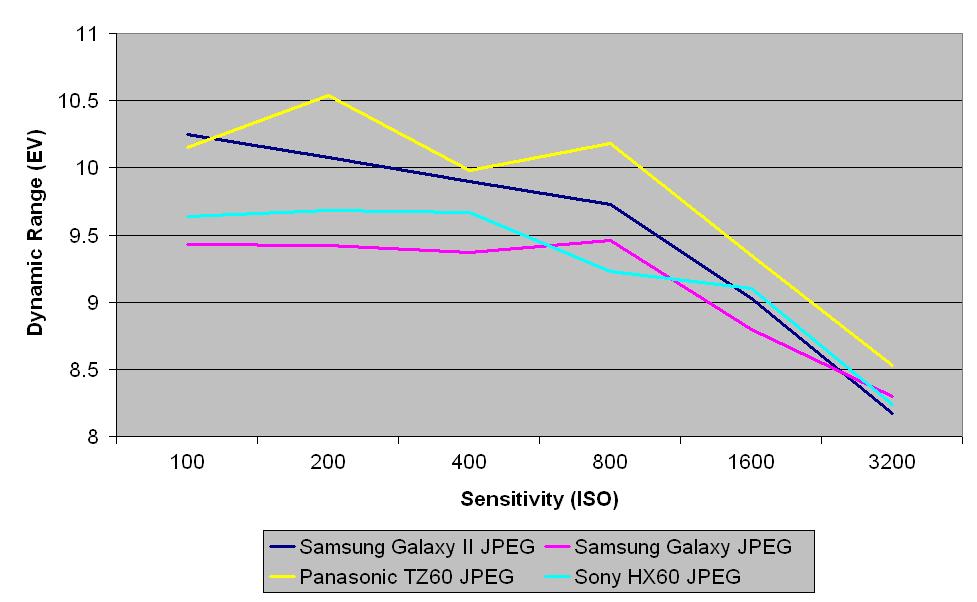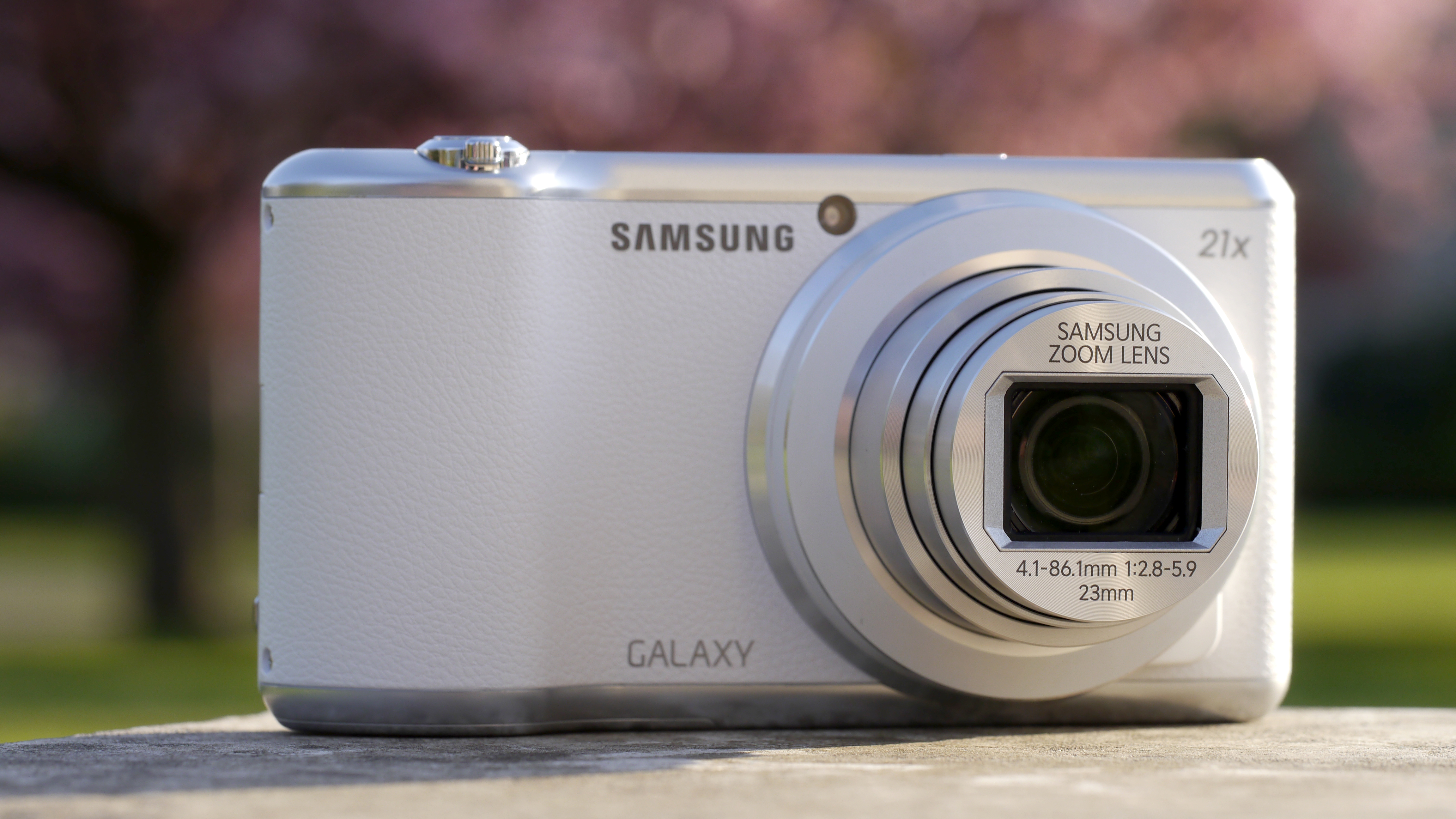Why you can trust TechRadar
We shoot a specially designed chart in carefully controlled conditions and the resulting images are analysed using DXO Analyzer software to generate the data to produce the graphs below.
A high signal to noise ratio (SNR) indicates a cleaner and better quality image.
For more more details on how to interpret our test data, check out our full explanation of our noise and dynamic range tests.
Here we compare the Samsung Galaxy 2 against the original Samsung Galaxy, the Panasonic TZ60, and the Sony HX60.
JPEG signal to noise ratio

Here we can see that for signal to noise ratio, the Galaxy Camera 2 comes out on top, which is a good reflection of the low noise of shots - but it is worth remembering that the Galaxy Camera 2 is guilty of image smoothing and loss of detail. While cameras such as the Panasonic TZ60 or Sony HX60 may be more prone to noise, they are also capable of better detail reproduction too.
JPEG dynamic range

Here it is the Panasonic TZ60 which comes out on top. The Galaxy II's dynamic range performance is not too bad though, beating the original Galaxy camera, and the Sony HX60. The Galaxy 2's camera produces nice, vibrant images with accurate but warm toned colours.
Current page: Noise and dynamic range
Prev Page Image quality and resolution Next Page Sensitivity and noise imagesAmy has been writing about cameras, photography and associated tech since 2009. Amy was once part of the photography testing team for Future Publishing working across TechRadar, Digital Camera, PhotoPlus, N Photo and Photography Week. For her photography, she has won awards and has been exhibited. She often partakes in unusual projects - including one intense year where she used a different camera every single day. Amy is currently the Features Editor at Amateur Photographer magazine, and in her increasingly little spare time works across a number of high-profile publications including Wired, Stuff, Digital Camera World, Expert Reviews, and just a little off-tangent, PetsRadar.

